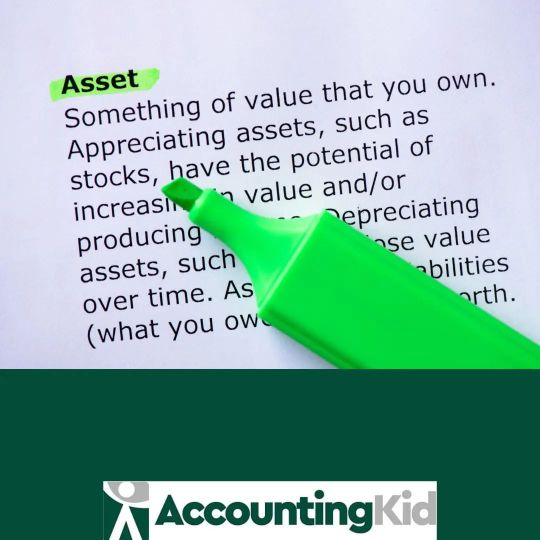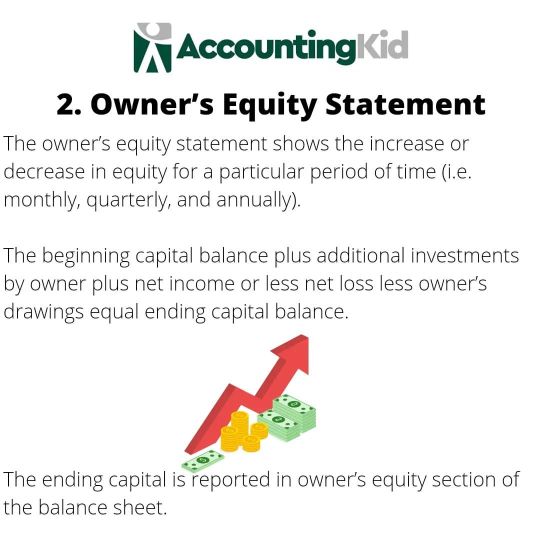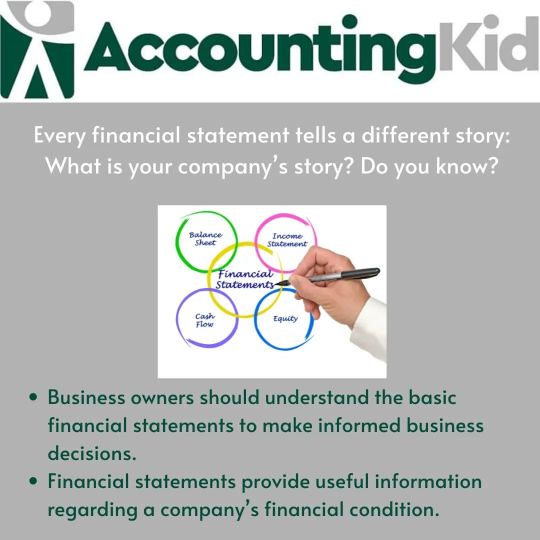Text
What is Financial Leverage? #FinancialLeverage
"Financial leverage results from using borrowed capital as a funding source when investing to expand the firm's asset base and generate returns on risk capital. Leverage is an investment strategy of using borrowed money—specifically, the use of various financial instruments or borrowed capital to increase the potential return of an investment."
https://www.investopedia.com/terms/l/leverage.asp
Follow Accounting Kid to learn more about accounting, finance, money, and investments. IG @accountingk
#financialleverage #debtmanagement #debtmanagementplan #financialstatementanalysis
#borrowedcapital #capital #accountingmajor #accountingstudent #financialplanning #finance #financialfreedom #financialliteracy #investing #accountingtips #investingforbeginners #accounting #generationalwealth #entrepreneurship #moneymanagement #financialeducation #smallbusinessowner #smallbusiness #wealthbuilding #financialliteracyforkids #financialliteracyforyouth #dividends #investment #stockmarket #cashflow
instagram
0 notes
Photo

I had a visitor this afternoon...Meet my new friend. His name is Warrior... #warrior #warriors #prayingmantis #theprayingmantis#mentalhealh #mentalhealthawareness #mentalhealthmatters #outdoors #zerogatorade #gatorade #nature #naturesbeauty #insectsphotography #insects https://www.instagram.com/p/CgM6xUtun7p/?igshid=NGJjMDIxMWI=
#warrior#warriors#prayingmantis#theprayingmantis#mentalhealh#mentalhealthawareness#mentalhealthmatters#outdoors#zerogatorade#gatorade#nature#naturesbeauty#insectsphotography#insects
0 notes
Photo

Let's GO Vegetables! Plant Seeds, Reap Harvest...Health is Wealth....Easy day... Walk-through Tuesday...Easy day! Let's GO! https://www.instagram.com/p/CeyOo0qu14j/?igshid=NGJjMDIxMWI=
0 notes
Photo

Assets are resources owned by a business (e.g. cash, supplies, inventory, accounts receivable, prepaid expenses, equipment, buildings, land, and vehicles) and further classified as current assets and non-current assets. Current assets are short-term assets that can be converted into cash or will be used up within one year. Non-current assets are long-term assets such as property, plant, and equipment, long-term investments, and intangible assets (e.g. patents, copyrights, trademarks, licenses, and goodwill). Property, plant, and equipment are long-term assets currently used in the company’s operation. https://www.instagram.com/p/CeO_tjOODor/?igshid=NGJjMDIxMWI=
0 notes
Photo

Statement of Cash Flow aka Cash Flow Statement Where is the cash coming from (inflows)? and Where is the cash going (outflows)? Cash inflows and outflows are like the inflow and outflow of oxygen for humans. Suppose all the oxygen is vacuumed out of a room. A person would begin gasping for air and finally collapse. Similarly, a business would struggle if all the cash was extracted out and eventually collapse without cash inflows. Companies rely on cash flows to survive. Questions / Comments 👇 https://www.instagram.com/p/CeMxP1fOSMp/?igshid=NGJjMDIxMWI=
0 notes
Photo

The balance sheet provides a financial snapshot. Reports asset, liability, and equity account balances. Do you understand your company's balance sheet? How often do you review your company's financial reports? Let's talk! Accounting Kid will provide a detailed financial analysis. Accounting Kid is Surgical with these numbers! Questions /Comments 👇 https://www.instagram.com/p/CeLX7ovOQn8/?igshid=NGJjMDIxMWI=
0 notes
Photo

How much equity do you have in your business? Accounting Kid will provide a detailed financial statement analysis. Accounting Kid is Surgical with these numbers: 0123456789...Let's talk! https://www.instagram.com/p/CeI7zeSOQCe/?igshid=NGJjMDIxMWI=
0 notes
Photo

Every financial statement / report tells a different story! Let's talk about your numbers. Do you want to increase your company's profitability? Is your company experiencing short-term liquidity / cash flow problems? Let's talk...Accounting Kid will dissect your financial reports and provide a detailed financial analysis... Accounting Kid is Surgical with these numbers! https://www.instagram.com/p/CeIlZyEu4BW/?igshid=NGJjMDIxMWI=
1 note
·
View note
Link
Join Robinhood and we'll both get a share of stock like Apple, Ford, or Sprint for free. Make sure you use my link.
0 notes
Text
Every financial statement tells a different story: What is your company’s story? Do you know?
Every financial statement tells a different story: What is your company’s story? Do you know? by Dr. John E. Ware, I
Business owners should understand the basic financial statements to make informed business decisions. How can a business owner make sound business decisions without knowing the numbers? Financial statements provide useful information regarding a company’s financial condition.
Financial Statements are interconnected and must be prepared in the following order:
1. Income Statement – measures the company’s financial performance and profitability for a particular period of time (i.e. monthly, quarterly, and annually). Revenue and expense accounts are reported on the income statement to determine the net income or net loss. Revenues less expenses equal net income or net loss. The net income or net loss is needed to prepare the owner’s equity statement.
2. Owner’s Equity Statement - The owner’s equity statement shows the increase or decrease in equity for a particular period of time (i.e. monthly, quarterly, and annually). The beginning capital balance plus additional investments by owner plus net income or less net loss less owner’s drawings equal ending capital balance. The ending capital is reported in owner’s equity section of the balance sheet.
3. Balance Sheet - The balance sheet presents a snapshot of the company’s assets, liabilities, and owner’s equity as of a specific date (e.g. As of January 31, 2017). It is important to review the most recent balance sheet. What is the company’s total assets? What is the total liabilities (total debt obligation)? How much equity does the owner have in the business?
4. Statement of Cash Flow - The statement of cash flow displays the inflows and outflows of cash from operating, investing, and financing activities. Where is the cash coming from (inflows)? and Where is the cash going (outflows)? Cash inflows and outflows are like the inflow and outflow of oxygen for humans. Suppose all the oxygen is vacuumed out of a room. A person would begin gasping for air and finally collapse. Similarly, a business would struggle if all the cash was extracted out and eventually collapse without cash inflows. Companies rely on cash flows to survive.
Do you know your company’s story?
#accounting#cash flow#financial statements#income statement#balance sheet#owner's equity#statement of cash flow#capital#assets#liabilities#owner's drawing#owner's capital#investments#business#business owners#revenue#expenses#net income#net loss
1 note
·
View note
Text
Assets and Liabilities
Assets and Liabilities
by Dr. John E. Ware, I
Assets
Assets are resources owned by a business (e.g. cash, supplies, inventory, accounts receivable, prepaid expenses, equipment, buildings, land, and vehicles) and further classified as current assets and non-current assets. Current assets are short-term assets that can be converted into cash or will be used up within one year. Non-current assets are long-term assets such as property, plant, and equipment, long-term investments, and intangible assets (e.g. patents, copyrights, trademarks, licenses, and goodwill). Property, plant, and equipment are long-term assets currently used in the company’s operation.
Liabilities
Liabilities are debt obligations to creditors. This is the amount of debt a company carries on its balance sheet and classified as: current liabilities and long-term liabilities. Current liabilities reflect short-term obligations to creditors (debt due within one year). Long-term liabilities represent future debt obligations over one year. For example, suppose a company acquires a 15-year mortgage. The amount due within the next 12 months is classified as a current liability in an account titled: Current Maturities of Long-term Debt or Short/Current Long-term Debt and the remaining balance due in 14 years is classified as a long-term liability. The portion of the long-term debt due within 12 months will always be reported in the current liabilities section of the balance sheet. The entire amount due (last 12 months) is reported as a current liability in the final year of the loan.
#liability#assets#current assets#longterminvestment#current Liabilities#cash#investments#accounting#accountingkid#basic accounting equation#finance#liquidity#balance sheet#mortgage#debt
0 notes
Video
youtube
Use the basic accounting equation to analyze business transactions.
0 notes
Text
CAN FACEBOOK (FB) GENERATE $100 BILLION IN REVENUE BY 2020?
Can Facebook (FB) generate $100 billion in revenue by 2020?
Unsurprisingly, Facebook (FB) revenue continues to grow rapidly. While Facebook (FB) is still a fairly young company, the revenue generated is significantly greater than other social media companies. The Kid conducted a trend analysis of Facebook’s (FB) annual revenue from 2010 - 2016, which indicated accelerated revenue growth year over year.
Let’s review the trend analysis below (expressed in thousands):
Facebook (FB) generated revenue of $1,974,000 in 2010, $3,711,000 in 2011, $5,089,000 in 2012, $7,872,000 in 2013, $12,466,000 in 2014, $17,928,000 in 2015, and $27,638,000 in 2016.
The trend analysis reveals an 88% increase from 2010 to 2011, 37.1% increase from 2011 to 2012, 54.7% increase from 2012 to 2013, 58.4% increase from 2013 to 2014, 43.8% increase from 2014 to 2015, and 54.2% increase from 2015 to 2016.
Furthermore, revenue has grown a whopping 1,300% from 2010 to 2016 and an average annual growth rate of approximately 56%. Assuming Facebook’s (FB) revenue continues to grow at an average rate of 56% per year, the company will exceed $100 billion in revenue by 2019. Approximately, $43,115,280 in 2017, $67,259,836 in 2018, $104,925,345 in 2019, and $163,683,538 in 2020.
The Kid takes a more conservative approach on Facebook (FB), utilizing a growth rate of 40% per year over the next 5 years. Resulting in approximately $38,693,200 in 2017, $54,170,480 in 2018, $75,838,672 in 2019, and $106,174,140 in 2020. Moreover, the analysis indicates that Facebook (FB) will earn revenue of $100 billion in 2020 and approximately $148,643,797 by year end 2021.
To sum it all up, the Kid believes Facebook (FB) will accelerate through the $100 billion revenue mark between 2019 and 2020.
#accounting#investing#finance#stock market#stocks#facebook#accountingkid#revenue#investments#investors#business#100billion#2020#trend analysis#horizontal analysis
0 notes
